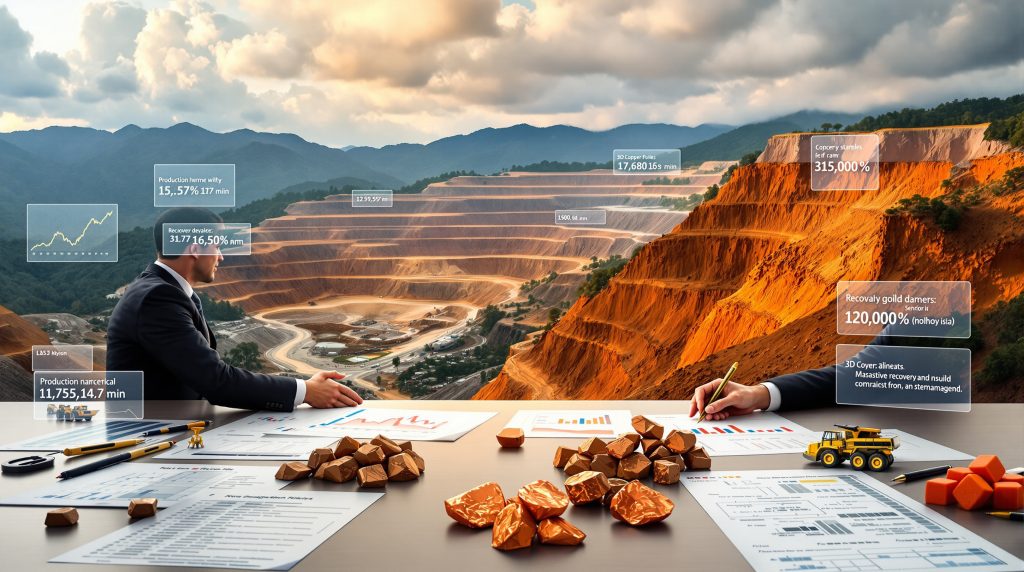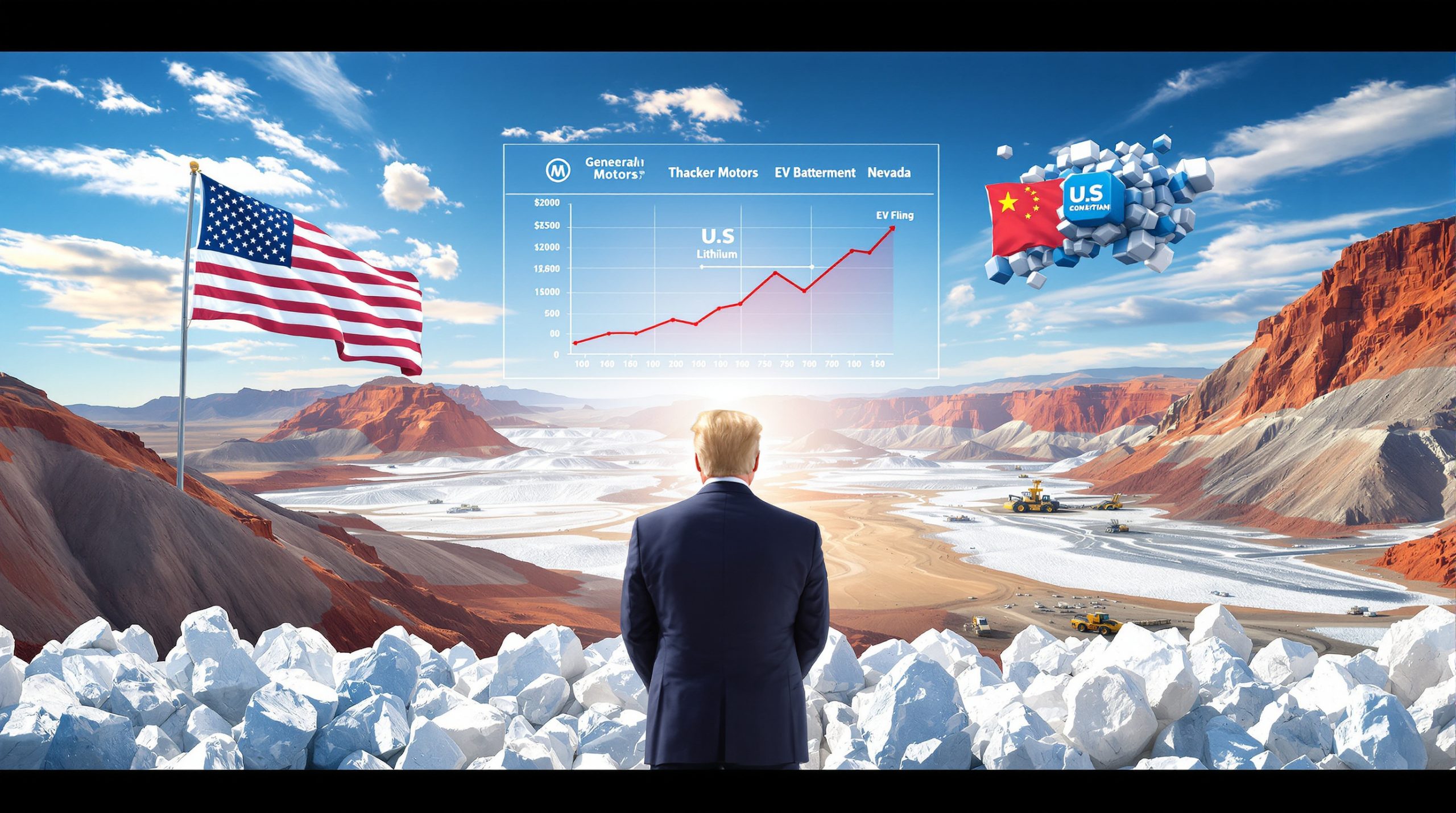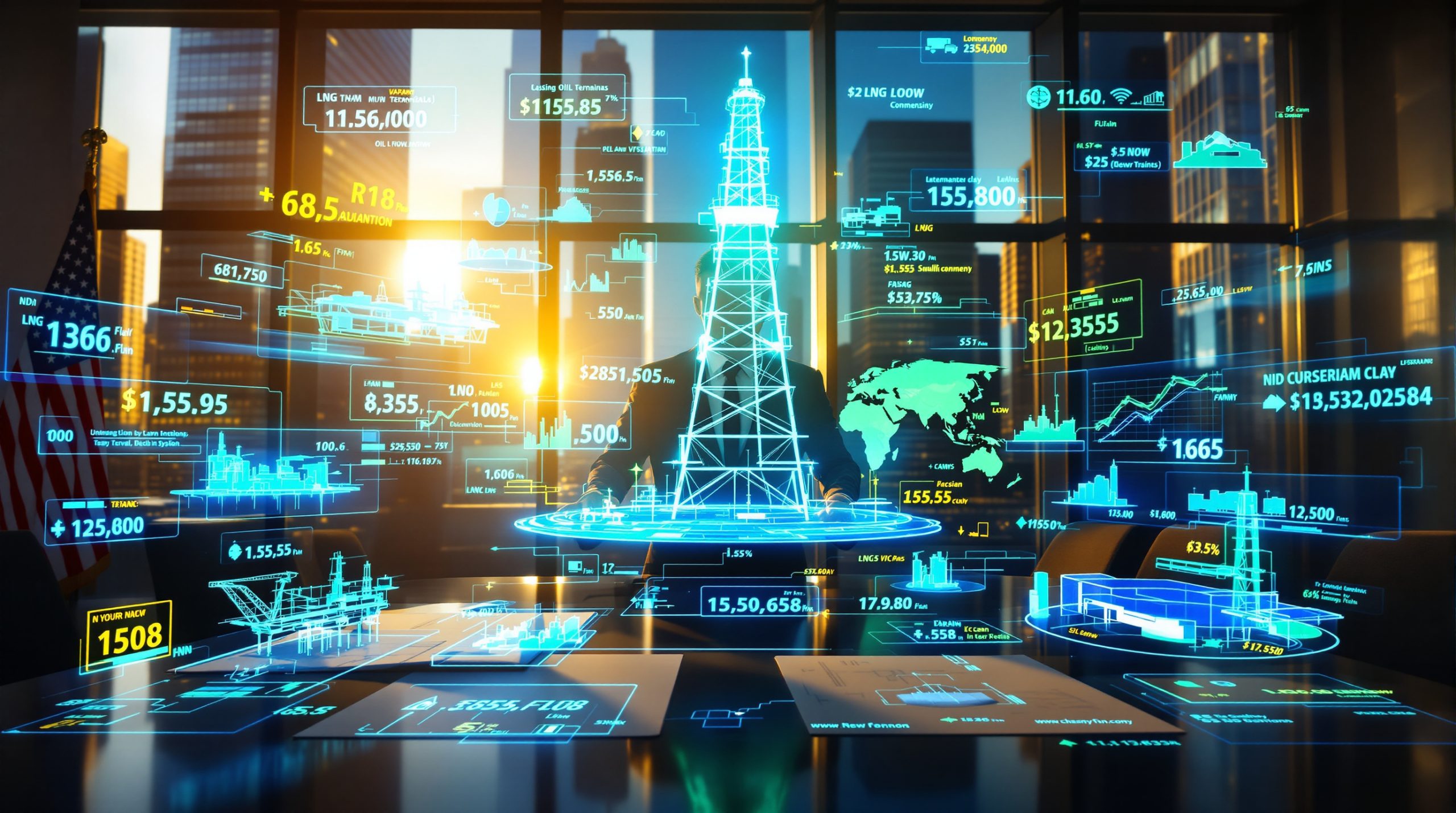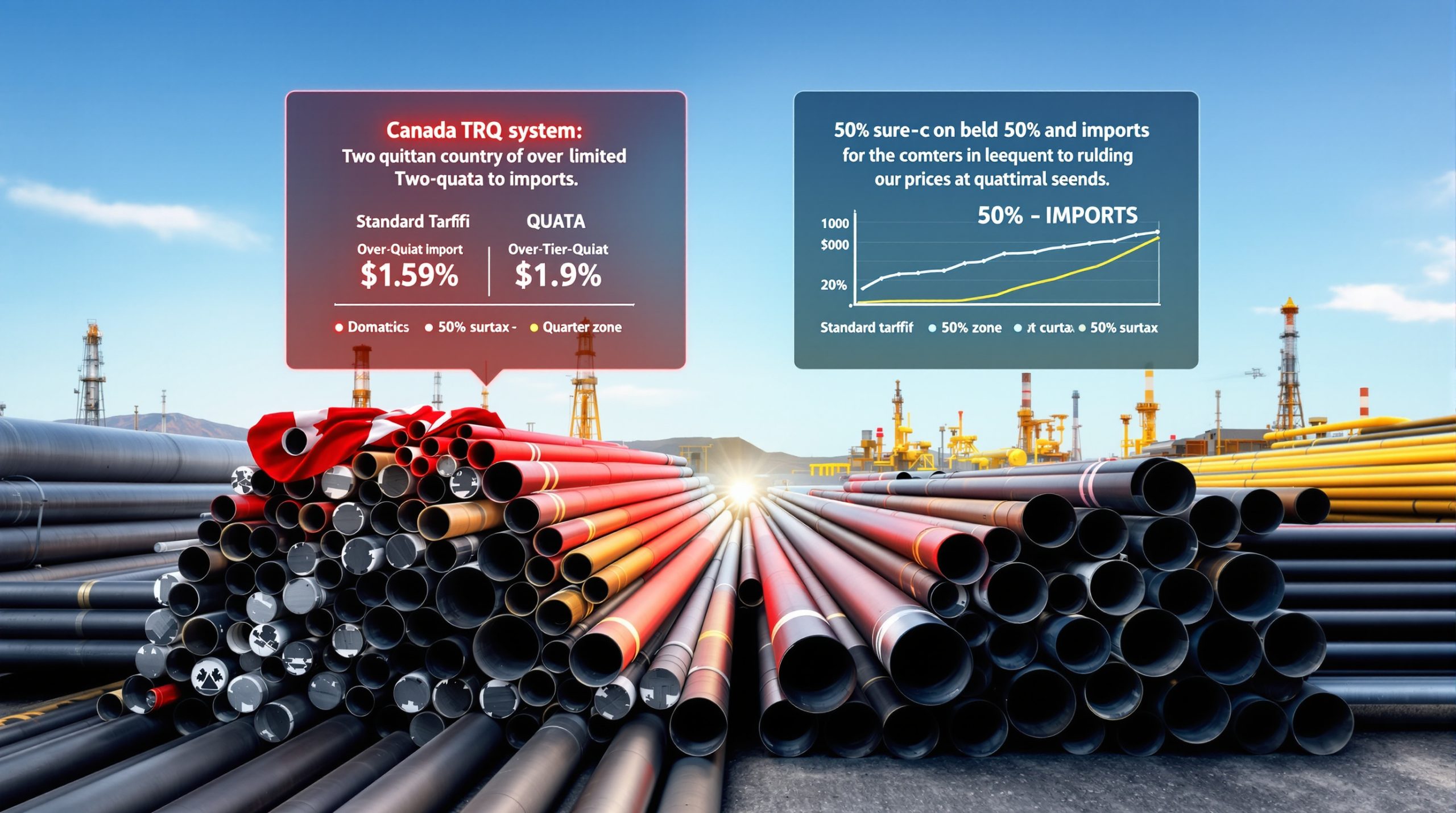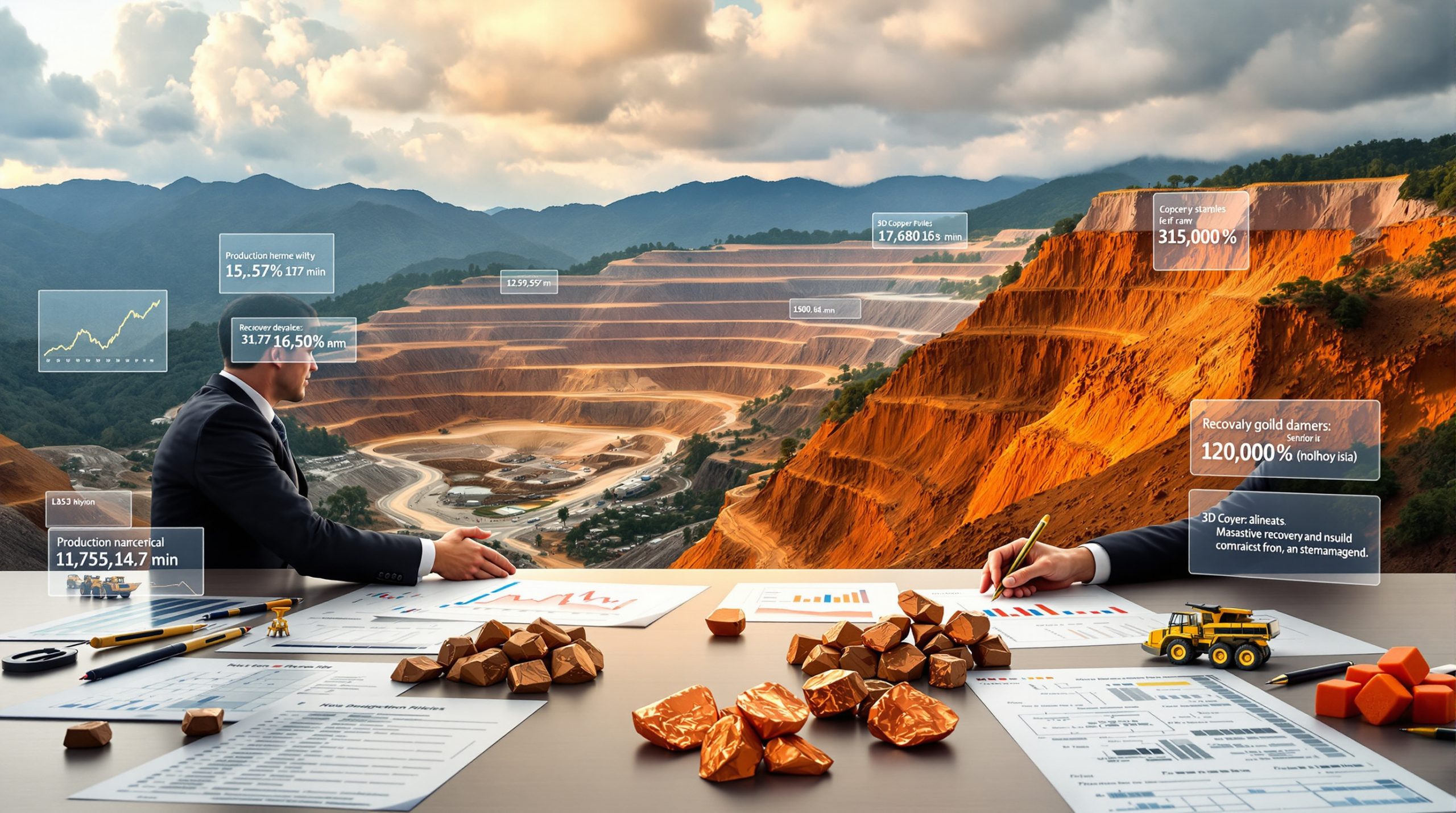What is the Current Status of Freeport-McMoRan's Grasberg Mine Negotiations?
The negotiations between Freeport-McMoRan and the Indonesian government regarding the Grasberg mine have reached a critical juncture as of September 2025. These discussions center around extending operational rights beyond the current 2041 expiration date, occurring against a backdrop of serious operational challenges. The recent catastrophic mudslide incident has significantly altered the negotiation landscape, introducing urgent safety and recovery concerns alongside long-term strategic considerations.
Freeport-McMoRan continues to engage with Indonesian authorities in what company representatives describe as ongoing and constructive talks. According to recent statements, both parties are "working to conclude an agreement that would be beneficial to all stakeholders," though specific terms remain undisclosed during this sensitive negotiation phase.
Ownership Structure and Strategic Importance
The Grasberg mine operates under a complex ownership arrangement that reflects Indonesia's resource nationalism policies developed over recent years. The current structure includes:
- 51% ownership held by the Indonesian government
- 49% ownership retained by Freeport-McMoRan
- Operational control maintained by Freeport-McMoRan despite minority ownership
This ownership split resulted from a significant 2018 agreement that increased Indonesian government ownership from a previous minority position. Despite the reduced ownership stake, Freeport maintains operational control of the mine, highlighting the company's irreplaceable technical expertise in managing this complex operation.
Recent Developments Affecting Negotiations
The negotiation process has been dramatically complicated by operational challenges at the mine:
- Force majeure declaration in September 2025 following devastating mudslides
- Confirmed fatalities of two workers with ongoing recovery efforts for others
- Complete production halt with recovery timeline extending into 2027
- Preliminary discussions about potential additional stake divestment by Freeport's Indonesian unit
These developments have created an unusual negotiation environment where immediate crisis management occurs alongside strategic long-term discussions about the mine's future operational control. The Indonesian government must balance its desire for greater sovereignty over natural resources with the practical need for Freeport's continued technical expertise and capital investment.
How Has the Recent Disaster Impacted Grasberg's Operations?
The September 2025 mudslide incident represents one of the most severe operational disruptions in Grasberg's history. This catastrophic event has created both immediate humanitarian concerns and extensive production challenges that will affect global copper markets for years to come.
The disaster occurred during a period of particularly heavy rainfall in Papua province, which triggered massive earth movement in an area already characterized by challenging topography. The remote, high-altitude location of the mine compounds recovery challenges, making equipment mobilization and rescue operations exceptionally difficult.
Scale of the Disaster
The mudslide's impact on mine operations has been severe and multifaceted:
- Massive movement of wet material throughout critical mine sections
- Confirmed fatalities of two workers with others injured in the incident
- Complete cessation of mining operations following the disaster
- Extensive damage to mining infrastructure requiring comprehensive repairs
The tunnel failure incident declaration indicates the company cannot meet its contractual obligations due to these extraordinary circumstances. This legal protection is rarely invoked except in cases of genuine operational impossibility, highlighting the severity of the disruption.
Production Impact Assessment
The production impact will extend over multiple years, with staged recovery expected:
| Year | Projected Production Loss | Expected Recovery Status |
|---|---|---|
| 2025 | Complete disruption through Q4 | Emergency response and initial assessment |
| 2026 | Significant reduction in copper and gold output | Phased restart beginning in early quarters |
| 2027 | Gradual return to pre-incident capacity | Full operational recovery targeted |
Industry analysts note that these production losses will be particularly significant given Grasberg's position as the world's largest gold mine and second-largest copper mine. The temporary closure is expected to impact global copper market insights at a time when demand for the metal continues to grow for renewable energy and electric vehicle applications.
Safety and Regulatory Response
The disaster has triggered comprehensive safety reviews and regulatory oversight:
- Independent engineering assessments of structural integrity throughout the mine
- Enhanced safety protocols being developed for operational restart approval
- Comprehensive regulatory reviews by Indonesian mining authorities
- Environmental impact evaluations of the mudslide and remediation requirements
These reviews will likely result in more stringent safety requirements and potentially more conservative mining approaches when operations resume, affecting production rates and operational costs for years to come.
What Are the Key Points of Contention in the Negotiations?
The negotiations between Freeport-McMoRan and the Indonesian government involve complex dimensions beyond simple operational rights extension, reflecting broader tensions between resource nationalism and foreign investment attraction.
Several fundamental issues have emerged as central to these discussions, with both parties navigating national interests, commercial realities, and technical complexities. The recent disaster has added urgency to resolving these issues while simultaneously complicating the negotiation dynamics.
Operational Rights Extension Beyond 2041
The cornerstone issue remains the extension of mining rights beyond 2041:
- Freeport seeks long-term operational certainty to justify continued capital investment
- Indonesian government evaluates the proper balance of sovereignty and economic benefit
- Both parties recognize the precedent-setting implications for other foreign mining operations
- Technical feasibility of continued operations requires comprehensive resource assessment
The lengthy timeframe involved—extending operations 16+ years beyond the current agreement—necessitates detailed consideration of reserve life, extraction technologies, and market conditions that will evolve substantially before the current rights expire.
Economic and Sovereignty Considerations
Economic arrangements form another complex negotiation dimension:
- Revenue sharing formulas between Freeport and Indonesia require recalibration
- Local content requirements aim to develop domestic supply chains and expertise
- Employment guarantees for Indonesian nationals remain politically important
- Technology transfer commitments seek to build local mining capabilities
These economic elements reflect Indonesia's broader development strategy of capturing more value from its natural resources rather than simply exporting raw materials. However, they must balance against Freeport's need for commercially viable operations that satisfy shareholders.
Environmental and Social Responsibility Factors
Environmental considerations have gained prominence in these negotiations:
- Tailings management and environmental remediation plans require updating
- Community development initiatives around the mine site need enhancement
- Indigenous rights considerations for local populations demand attention
- Long-term environmental liability arrangements must be clearly defined
The recent mudslide has intensified scrutiny of environmental practices, with greater emphasis likely on geotechnical stability and disaster prevention in any new agreement. These elements reflect evolving global expectations for mining companies' environmental and social performance.
How Does Grasberg Compare to Other Global Copper Operations?
The Grasberg mine stands as one of the world's most significant mineral assets, with exceptional characteristics that distinguish it from other major copper operations globally. Its strategic importance extends beyond Indonesia to global metal markets, where its production significantly impacts supply-demand dynamics for both copper and gold.
Production Scale and Reserve Profile
Grasberg's production capabilities and reserve quality place it among the elite tier of global copper operations:
| Metric | Grasberg Ranking | Contextual Significance |
|---|---|---|
| Copper Production | 2nd largest globally | Major contributor to global copper supply |
| Gold Production | Largest gold mine worldwide | Significant by-product revenue generator |
| Reserve Life | Multi-decade potential | Strategic long-term asset |
| Grade Quality | Among highest-grade large deposits | Enhances economic viability |
These metrics demonstrate why Grasberg remains a crown jewel in Freeport's global portfolio despite operational challenges and complex ownership structure. The mine's ability to produce both copper and gold at substantial scale provides economic resilience through different metal price cycles.
Strategic Importance to Global Supply
Grasberg's significance extends beyond simple production volumes:
- Critical supplier to Asian copper refineries that depend on its concentrate
- Significant contributor to global gold market liquidity
- Important revenue source for Indonesian government's development agenda
- Benchmark operation for remote, high-altitude mining techniques
The mine's temporary closure following the mudslide incident has already impacted global copper markets, highlighting its importance to metal supply chains. This supply disruption occurs as global copper demand continues growing for renewable energy infrastructure, electric vehicles, and construction applications.
Operational Complexity and Technical Achievement
The mine's operational challenges distinguish it from many other global copper assets:
- Extreme altitude operations at approximately 4,300 meters above sea level
- Complex ore body requiring sophisticated extraction techniques
- Remote location necessitating extensive infrastructure development
- Challenging climatic conditions with high rainfall and frequent fog
These factors make Grasberg a technically demanding operation requiring specialized expertise that few mining companies globally possess. This technical complexity partly explains why Indonesia maintains operational partnership with Freeport despite resource nationalism objectives.
What Are the Market Implications of Grasberg's Production Disruption?
The force majeure declaration and production stoppage at Grasberg have created significant ripple effects throughout global copper markets, highlighting the mine's importance to supply-demand dynamics. As one of the world's premier copper and gold operations, even temporary disruption at Grasberg has measurable impacts on metal prices, supply forecasts, and market sentiment.
Copper Market Response
The copper market has responded quickly to news of Grasberg's operational challenges:
- Price movements following the force majeure announcement reflected supply concerns
- Supply tightness amplified by concurrent disruptions at other major mines globally
- Market recalibration of 2026-2027 supply projections to account for extended recovery
- Increased attention to alternative production sources and project development timelines
This market reaction reflects copper's increasingly strategic importance in global energy transition efforts, where supply disruptions have magnified impact due to growing demand from renewable energy and electric vehicle sectors.
Financial Impact on Freeport-McMoRan
The disruption has created several financial challenges for Freeport-McMoRan:
- Potential revenue losses extending through the multi-year recovery period
- Capital expenditure reprioritization for recovery and restoration efforts
- Insurance claim processes for business interruption and physical damage
- Investor relations challenges in communicating recovery timelines
These financial impacts occur at a time when Freeport had been benefiting from strong copper prices and increasing demand forecasts, creating a significant contrast to previous market expectations for the company's performance.
Analyst Perspectives
Financial and industry analysts have offered varied assessments of the situation:
- Several major investment firms have noted that accident risks are now being priced into the stock
- Industry consensus generally supports the view that the recovery timeline is realistic but challenging
- Many observers recognize potential long-term implications for Indonesian mining regulations
- Analysts continue evaluating impacts on Freeport's broader portfolio strategy and capital allocation
These assessments acknowledge both the immediate operational challenges and the potential longer-term strategic implications for Freeport's relationship with Indonesia and its position in global copper markets.
How Might the Negotiations Affect Indonesia's Mining Sector?
The outcome of Freeport's negotiations will likely establish important precedents for Indonesia's approach to foreign investment in its resource sector. As one of the largest and most visible mining operations in the country, Grasberg serves as a bellwether for Indonesia's resource governance approach.
The negotiations occur within Indonesia's broader resource nationalism framework, which has evolved significantly in recent years. The government has increasingly sought to capture greater economic value from its natural resources while balancing the need to attract technical expertise and capital investment.
Regulatory Framework Evolution
The Grasberg negotiations could drive several regulatory developments:
- Potential updates to Indonesia's mining law implementation regulations
- Refinement of divestment requirements for foreign operators in strategic sectors
- Clarification of extension processes for major mining assets
- Balanced approach between investment attraction and resource nationalism
These regulatory developments would have implications beyond Freeport, potentially affecting all foreign mining companies operating in Indonesia and those considering future investments.
Domestic Processing Requirements
Indonesia's push for domestic mineral processing continues influencing these negotiations:
- Ongoing emphasis on in-country smelting and refining capabilities
- Evaluation of progress on previously mandated processing facilities
- Potential adjustments to mineral export regulations based on domestic capacity
- Development of downstream industry capabilities through strategic partnerships
These requirements reflect Indonesia's desire to capture more value from its mineral resources by moving beyond simple extraction to higher-value processing activities within its borders.
Investment Climate Signals
The negotiation outcome will send important signals to the global mining investment community:
- Perception of regulatory predictability and contractual stability
- Risk assessment implications for other Indonesian mining projects
- Competitive positioning versus other mining jurisdictions globally
- Precedent-setting effects for other major mining contract renewals
These investment climate implications extend beyond mining to Indonesia's broader economic development goals, which depend partly on attracting foreign direct investment across multiple sectors.
What Historical Context Shapes the Current Negotiations?
The current negotiations build upon a complex history between Freeport-McMoRan and Indonesia, with several pivotal developments influencing the present discussions. Understanding this historical context provides essential perspective on the expectations, motivations, and constraints affecting both parties.
The relationship between Freeport and Indonesia spans multiple political eras, from the authoritarian Suharto regime to today's democratic government, with each transition bringing new approaches to foreign investment and resource governance.
Key Historical Milestones
Several critical events have shaped the Freeport-Indonesia relationship:
- 1967: Original Contract of Work signed during early Suharto administration
- 1991: Major expansion of mining operations with revised agreements
- 2014: Export ban on unprocessed minerals implemented to encourage domestic processing
- 2018: Ownership restructuring with government acquiring 51% stake
- 2023: Completion of domestic smelter construction fulfilling prior commitments
These milestones illustrate the evolution from colonial-era resource extraction models toward more balanced partnership arrangements that reflect Indonesia's growing economic sovereignty and development priorities.
Evolution of Relationship Dynamics
The power dynamics between Freeport and Indonesia have evolved substantially:
- Transition from colonial-era concession models to modern partnership frameworks
- Increasing Indonesian assertiveness in resource governance as technical capacity grows
- Development of Indonesian mining expertise reducing dependence on foreign knowledge
- Shifting negotiation leverage reflecting changing economic and political realities
This evolution reflects broader global trends in resource-rich developing nations seeking greater control over their natural endowments while recognizing the continued importance of international capital and expertise.
Lessons from Previous Negotiations
Past negotiations offer valuable insights for current discussions:
- Importance of clear dispute resolution mechanisms to manage future disagreements
- Value of phased implementation for major structural changes
- Need for flexibility during different market cycles and economic conditions
- Benefits of transparent stakeholder communication throughout negotiation processes
These lessons highlight the importance of creating sustainable arrangements that can withstand changing political administrations, market conditions, and operational challenges over the multi-decade timeframe involved.
What Recovery Timeline Has Freeport Communicated?
Freeport has outlined a multi-year recovery plan that acknowledges the significant technical challenges of restoring operations following the mudslide incident. This timeline reflects the complexity of recovering from a major operational disruption at a remote, high-altitude mine with challenging access and working conditions.
The company has indicated that Grasberg may not return to pre-accident operating rates until at least 2027, signaling the extensive nature of the recovery effort ahead. This timeline accounts for both physical reconstruction needs and the regulatory approvals required before operations can safely resume.
Phased Recovery Approach
The recovery plan follows a methodical, staged approach:
-
Assessment and Stabilization Phase (Q4 2025)
- Comprehensive engineering evaluations of impacted areas
- Site safety protocols enhancement based on incident learnings
- Infrastructure repair planning and prioritization
- Regulatory approval processes for restart activities
-
Initial Restart Phase (First Half 2026)
- Limited production from unaffected mining areas
- Gradual workforce remobilization with enhanced training
- Operational testing and monitoring systems implementation
- Continued remediation of damaged sections
-
Scaled Ramp-Up Phase (Second Half 2026)
- Progressive production increase toward pre-incident capacity
- Restoration of additional mining zones as they become accessible
- Optimization of processing facilities to match mining output
- Supply chain normalization for concentrate shipments
-
Full Recovery Phase (2027)
- Return to pre-incident production levels across operations
- Implementation of enhanced safety systems and monitoring
- Long-term stability monitoring of remediated areas
- Integration of lessons into standard operational practices
This phased approach balances the commercial pressure to resume production with the paramount importance of worker safety and operational stability.
Production Outlook Adjustments
The recovery timeline necessitates significant adjustments to production forecasts:
- 2026 copper production significantly below previous forecasts
- Gold output similarly affected throughout the recovery period
- Potential for permanent changes to mine plan and extraction sequence
- Revised reserve life calculations based on recovery constraints
These production adjustments will affect not only Freeport's financial performance but also global copper supply forecasts during a period of growing demand for the metal.
What Stakeholder Interests Are at Play in These Negotiations?
The negotiations involve a complex web of stakeholders with diverse and sometimes competing interests that must be balanced for a successful outcome. Understanding these varied perspectives is essential for appreciating the multidimensional nature of the discussions.
While Freeport and the Indonesian government are the primary negotiating parties, their positions represent broader constituencies with significant stakes in the outcome. The company has emphasized that negotiations aim to reach "an agreement that would be beneficial to all stakeholders."
Key Stakeholder Perspectives
Each major stakeholder group brings distinct priorities to the negotiation:
-
Indonesian Government
- Maximizing long-term economic benefits from natural resources
- Maintaining sovereignty over strategic mineral assets
- Developing domestic processing capabilities and supply chains
- Ensuring environmental and social compliance with national standards
-
Freeport-McMoRan
- Securing operational certainty for long-term capital planning
- Maintaining acceptable return on investment for shareholders
- Managing operational risks in a challenging mining environment
- Preserving operational control despite minority ownership
-
Local Communities
- Securing sustainable employment opportunities
- Environmental protection of traditional lands and water resources
- Fair compensation for impacts on traditional lifestyles
- Meaningful participation in development decision-making
-
Global Customers
- Supply reliability for copper concentrate needs
- Pricing stability in volatile market conditions
- Quality consistency for processing requirements
- Contractual flexibility during force majeure periods
Balancing these diverse interests requires sophisticated negotiation approaches that recognize the legitimacy of each stakeholder's concerns while finding practical solutions that work within technical and economic constraints.
Governance Complexity
The stakeholder environment is further complicated by governance factors:
- Multiple government ministries with overlapping jurisdictions
- Tensions between national and provincial government priorities
- International investor community expectations for transparency
- Civil society organization monitoring of environmental and social impacts
These governance complexities require careful navigation to ensure that agreements reached have necessary support across relevant institutional stakeholders.
What Does the Future Hold for the Grasberg Mine?
Looking beyond the current negotiations and recovery efforts, several factors will shape Grasberg's long-term trajectory and significance. The mine faces both challenges and opportunities as it evolves over the coming decades, with implications for stakeholders at local, national, and global levels.
The future of Grasberg will be influenced by technical evolution, market conditions, environmental expectations, and geopolitical factors that extend far beyond the current negotiation parameters.
Technical Evolution Considerations
Grasberg's operational approach continues evolving in response to changing conditions:
- Ongoing transition from open-pit to predominantly underground operations
- Increasing automation and digital technology implementation
- Enhanced monitoring systems for geotechnical stability following the mudslide
- Advanced water management and tailings solutions addressing environmental concerns
These technical evolutions reflect both industry-wide technological advancement and specific responses to Grasberg's unique operational challenges.
Economic Sustainability Factors
The mine's economic viability over extended timeframes depends on several factors:
- Long-term copper and gold price projections influencing investment decisions
- Operating cost management in a remote, challenging environment
- Capital investment requirements for sustaining operations beyond current infrastructure
- Competitive positioning against newer global copper projects with different cost profiles
These economic considerations will shape investment decisions about extending Grasberg's productive life and the scale of operations that remain viable in different market scenarios.
Environmental and Social Trajectory
Environmental and social dimensions will gain increasing importance:
- Progressive rehabilitation of historical mining areas as they complete their productive life
- Climate change adaptation strategies for high-altitude operations experiencing changing weather patterns
- Evolving community expectations for corporate responsibility and benefit-sharing
- Legacy planning for eventual mine closure and transition strategies
These environmental and social elements reflect growing global expectations for mining companies to operate as responsible stewards of both natural resources and community relationships.
FAQ: Freeport-McMoRan Grasberg Mine Negotiations
How significant is Grasberg to global copper supply?
Grasberg stands as the second-largest copper mine worldwide, contributing significantly to global copper production. The mine produces substantial volumes that affect market balances, particularly in Asian markets where much of its concentrate is processed. Its temporary closure following the mudslide incident has already created supply constraints that are expected to influence copper markets through 2027.
The mine's importance extends beyond simple production volumes to its role as a reliable supplier to key industrial consumers, particularly in the growing Asian manufacturing sector. Its production disruption occurs at a challenging time when copper demand continues rising for renewable energy applications.
What caused the September 2025 mudslide incident?
The September 2025 mudslide resulted from a combination of exceptionally heavy rainfall and specific geological conditions at the mine site. Papua's tropical climate regularly delivers substantial precipitation, but the rainfall preceding the incident was particularly intense, saturating ground that was already structurally complex.
The remote, high-altitude location of the mine combines challenging topography with weather extremes that create ongoing operational risks. Following the incident, comprehensive geotechnical assessments are underway to better understand contributing factors and implement enhanced monitoring systems to prevent future occurrences.
How will the Grasberg disruption affect copper prices?
The Grasberg disruption has already influenced copper market sentiment, creating price volatility as traders assess the supply implications. Copper markets typically respond quickly to production disruptions at major mines, particularly when they occur during periods of already tight supply-demand balance.
The extended recovery timeline through 2027 suggests prolonged market impact, with the significance depending on concurrent developments at other major copper producers globally. The tariff market impact will be particularly pronounced if the disruption coincides with production challenges at other major operations in Chile, Peru, or other key copper-producing regions.
What are the main points of contention in the rights extension negotiations?
The negotiations center around several key issues: the duration of any extension beyond 2041, economic terms including tax and royalty rates, environmental liability provisions, domestic processing requirements, and potential additional divestment of ownership to Indonesian entities.
These points reflect broader tensions between resource nationalism objectives and the practical need for continued foreign investment and expertise. Finding balanced solutions that satisfy both Indonesian sovereignty concerns and Freeport's commercial requirements remains the central challenge for negotiators.
How does the Indonesian government benefit from Grasberg operations?
The Indonesian government receives multiple revenue streams from Grasberg operations, creating significant economic value at national and local levels. These benefits include its 51% ownership share of profits, tax payments, royalties, and employment of thousands of Indonesian workers.
Beyond direct financial benefits, the mine supports Indonesia's strategic goal of building domestic mineral processing capabilities through its investments in local smelting infrastructure. These downstream developments create additional economic value and employment opportunities within Indonesia rather than exporting raw materials for processing elsewhere.
Balancing Interests for a Sustainable Future
The Grasberg mine negotiations represent a complex balancing act between commercial interests, national sovereignty, environmental stewardship, and community needs. As discussions continue between Freeport-McMoRan and the Indonesian government, finding sustainable solutions that accommodate diverse stakeholder interests remains the central challenge.
The mine's significant contribution to both global copper markets and Indonesia's economic development ensures these negotiations will have implications far beyond the immediate parties involved. The outcome will likely influence approaches to resource governance throughout Indonesia and potentially in other resource-rich developing nations.
While immediate attention focuses on recovery from the devastating mudslide incident, the longer-term negotiations about operational rights extension represent an opportunity to establish a framework that can deliver benefits to all stakeholders while ensuring responsible resource development for decades to come. As industry evolution trends continue to shape mining operations globally, these negotiations will likely reflect broader shifts toward more collaborative and sustainable resource governance models that balance economic development with environmental and social responsibility.
Want to Discover the Next Major Mineral Investment Before the Market?
Discovery Alert's proprietary Discovery IQ model instantly notifies investors of significant ASX mineral discoveries, transforming complex data into actionable investment insights. Explore why major mineral discoveries can lead to exceptional returns by visiting the Discovery Alert discoveries page and position yourself ahead of the market.
